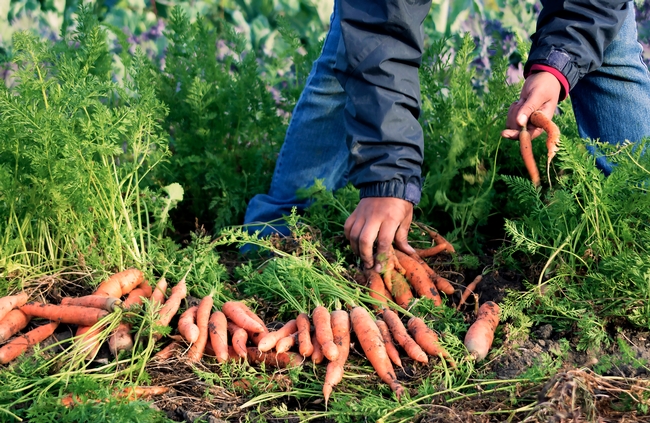Posts Tagged: diversity
Farmers of color share their contributions, concerns in UC SAREP webinar series
When agricultural advisors came to the Cochiti Pueblo in New Mexico during the 1940s, they lined the irrigation ditches with concrete, in the name of boosting efficiency and productivity. But in single-mindedly focusing on water delivery, they neglected to consider how the previously inefficient seepage sustained nearby fruit trees.
Their actions, as well-intentioned as they might have been, disrupted the local ecosystem and killed the trees that had fed many generations, according to A-dae Romero-Briones, who identifies as Cochiti and as a member of the Kiowa Tribe.
“In my language, we call the extension agents ‘the people who kill the fruit trees,'” said Romero-Briones, director of the Food and Agriculture Program for the First Nations Development Institute, a nonprofit that serves Tribal communities across the mainland, Alaska and Hawaii.
The historically tense relationship between Indigenous peoples and government-affiliated programs is one of the many complex dynamics discussed in a six-part webinar series, “Racial Equity in Extension,” facilitated by UC Sustainable Agriculture Research and Education Program.
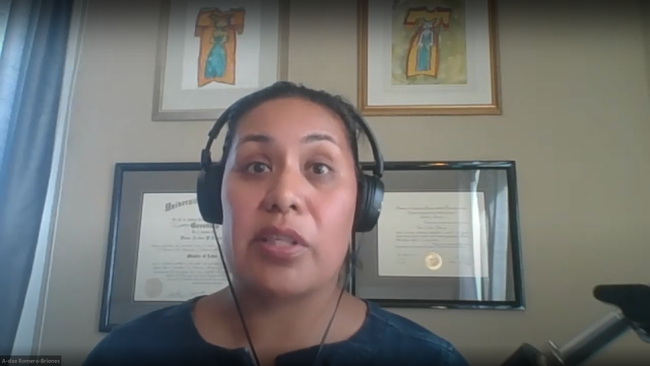
Making communities of color in the agricultural sector more visible is a priority for Victor Hernandez, a sociologist and outreach coordinator for the USDA's Natural Resources Conservation Service. Hernandez, who has organized “Growing Together” conferences for Latino and Black farmers, is trying to get more farmers of color to participate in the upcoming 2022 Agricultural Census.
“If we cannot quantify the demographic, we cannot justify the need,” emphasized Hernandez, explaining that his office uses the data to direct resources that advance equity in service, program delivery and distribution of funds.
A legacy of mistrust
At the same time, however, Hernandez also acknowledged the challenges in registering growers of color for the census, conducted by the USDA's National Agricultural Statistics Service. (According to Brodt, USDA's most recent agricultural census, dating to 2017, counts approximately 25,000 producers of color among 128,535 total producers in California.)
“Many of us that are considered socially disadvantaged or historically underserved…a lot of times our peoples come from [nations with] oppressive governments,” Hernandez said. “And so when you come to the United States and you begin to build your life here, to go and engage with the federal government is not the first knee-jerk reaction.”
On top of government mistrust and fears of deportation or detention, other immigrant groups have seen mainstream agriculture – borne by the “Green Revolution” wave across the globe – replace deep-rooted cultural practices, said Kristyn Leach of Namu Farm in Winters.
“It just makes these small farmers distrust our own knowledge, the knowledge that's existed for centuries – before the kind of current iteration of agriculture that we're situated within right now,” said Leach, who works to preserve the agricultural heritage of her Korean ancestors, and facilitates a farmers' collaborative called Second Generation that adapts Asian crop varieties to climate change.
According to Romero-Briones, a collective memory of supplanted culture also lingers in Indigenous communities. In the Cochiti Pueblo, “primarily a subsistence agriculture community” with a long history of corn cultivation, their practices are distinct from those in the mainstream – including regenerative and sustainable agriculture.
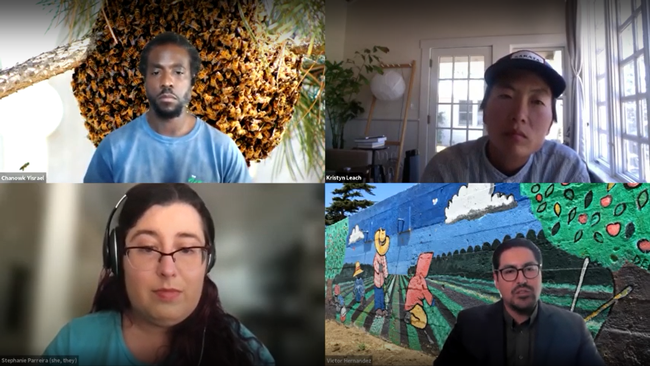
Building relationships takes commitment
Given that legacy of cultural displacement and appropriation, how do extension professionals and other agricultural advisors slowly rebuild trust with communities of color? For Romero-Briones, it begins with a genuine respect for Indigenous practices, and she urges interested people to contact their local tribal historic preservation officer to begin strengthening those connections and understanding – beyond a couple of phone calls.
“As someone who works with Indigenous people all day, even I need to recognize sometimes I have to meet with people up to 12 times before we actually start talking about the work that I initially wanted to talk to them about,” Romero-Briones said.
In a similar vein, Chanowk Yisrael, chief seed starter of Yisrael Family Farms, encouraged listeners to reach out to members of the California Farmer Justice Collaborative – an organization striving for a fair food system while challenging racism and centering farmers of color.
“To use a farm analogy: we've got this ground, which is the farmers of color who have been neglected for a long period of time,” said Yisrael, who has grown his farm in a historically Black neighborhood of Sacramento into a catalyst for social change. “It's not just going to be as simple as just throwing some seeds and things are going to come up; you're going to have to do more – that means you got to get out and do much more than you would do for any other community.”
Investing time in a community is one thing – and backing it up with tangible resources is another. Technical expertise is only the “tip of the iceberg,” Leach said, as historically marginalized groups are also seeking land access and tenure, more affordable cost of living, and access to capital.
“All of those things are actually much bigger burdens to bear for most communities of color than not having the knowledge of how to grow the crops that we want to grow, and not knowing how to be adaptive and nimble in the face of climate change," Leach explained, highlighting California FarmLink as an essential resource. (The “Understanding Disparities in Farmland Ownership” webinar includes a relevant discussion on this subject.)
Bringing diverse voices to the table
Another key is ensuring that farmers and farm workers of color are represented in management and decision-making processes. Samuel Sandoval, a professor in the UC Davis Department of Land, Air and Water Resources and UC Cooperative Extension specialist in water management, develops outreach programs in English and Spanish for everyone from farm workers to the “boss of the boss of the boss.”
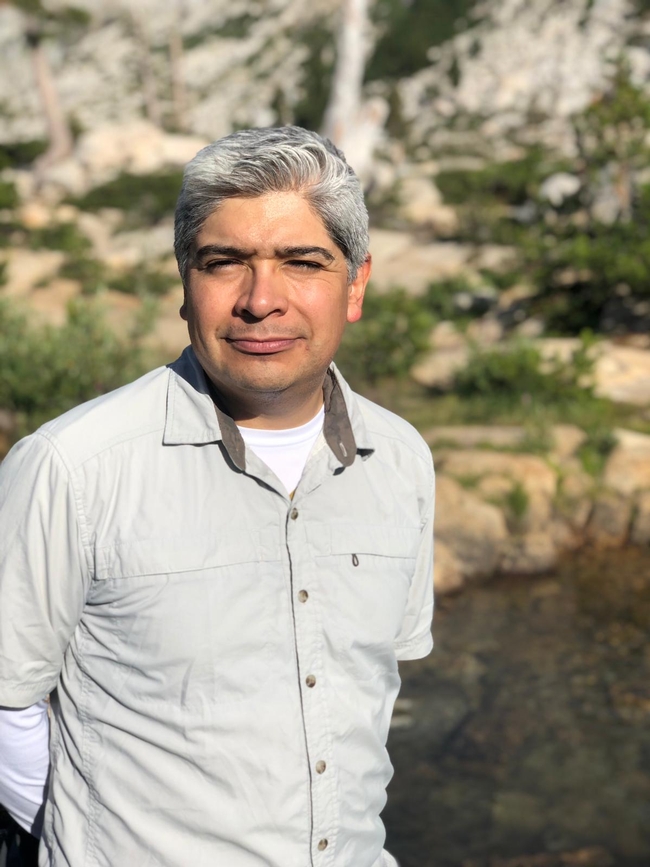
“It has to be changed,” he said, “because at the end, the person who is going to operate the irrigation system and turn on or off the valves, the person who is looking if there's a leak or not – that's the person who's not being informed, or has not been informed on purpose.”
That exclusion of certain groups can lead to a loss of invaluable knowledge. Leach said there is a real danger in ignoring the wisdom of communities that have contributed so much to the foundation of food systems in California and around the globe.
“These really kind of amazing, sophisticated and elegant agroecological systems that we don't often legitimize through the scientific language and perspectives aren't seen as being really technically proficient – but, in many ways, they're more dynamic and more resilient than the things that we're perpetuating right now,” she said.
As a concrete example, Sandoval said that while extension advisors and specialists conduct studies to remedy a plant disease, farm workers might be developing – separately and in parallel – their own solutions by asking for advice from their social networks via WhatsApp, a phone application.
A reimagining of collaboration, Sandoval said, would include (and compensate) people working in the field for sharing their perspectives – bringing together academics and farmers, integrated pest management experts and pesticide applicators, irrigation specialists and those who do the irrigation.
A need to look within
Concerns about inclusion and validating alternate sources of knowledge apply also to the recruitment process in extension. Leach said that she has seen listings for advisor jobs that would require, at a minimum, a master's degree – which would automatically disqualify her, despite her extensive knowledge of Asian heirloom vegetables.
“When you look at a job description and you see ‘Asian crop specialist,' only required qualification is a master's degree, and then somewhere down the long list of sort of secondary desired, recommended things is some knowledge of Asian crops or communities…you know that just says a lot in terms of what has weight,” Leach explained.
Before organizations can authentically connect with communities of color, they should prioritize diversity in their own ranks, said Romero-Briones. First Nations Development Institute had to ensure that they had adequate representation across the many Tribes that they serve.
“Before we start looking out, we have to start looking in,” she explained, “and that means we have to hire Indigenous people who know these communities.”
For extension professionals and other members of the agricultural community in California, the UC SAREP webinar series has helped spark that introspection and a meaningful reevaluation of institutional processes and assumptions.
“These discussions have been tremendously illuminating and eye-opening,” Brodt said. “But hearing and learning is just the start – it's incumbent on us, as an organization and as individuals, to take action to ensure that farmers of color and their foodways are truly respected and valued.”
The “Racial Equity in Extension” series is made possible by professional development funds from Western Sustainable Agricultural Research and Education.
Diversity • Equity • Inclusion
UC ANR and the entire UC community are dedicated to helping create the open and equitable society to which we are all entitled. As we stand with the global outcry against the senseless, tragic murders of Black Americans, we are exploring new paths we can take to support our communities during this time and into the future.
To help us discover those new paths, resources have been created and compiled by colleagues throughout UC to promote dialogue, understanding, connection and healing. You can find UC ANR resources on our Diversity • Equity • Inclusion webpage. There, you can also find resources for confronting gender and sexuality bias, and we are working to add resources that address the breadth of diversity, equity and inclusion challenges in our organization. We welcome suggestions for additional resources to include. Please email suggestions to DEI@ucanr.edu.
Today is Juneteenth, widely celebrated in African American communities as “Freedom Day” or “Emancipation Day,” to mark the date of June 19, 1865, when the federal orders were read by Union Colonel Gordon Granger in Galveston, Texas, informing more than 250,000 still-enslaved Blacks that they had their freedom. The notice came to slaves in the state of Texas more than two years after President Abraham Lincoln signed the Emancipation Proclamation, which became official on Jan. 1, 1863.
On this important day, we are reflecting on our country, its treatment of Black, brown and Native American peoples, and how UC values can help guide us into the future. We must continue to reflect on how our institutions and our culture treat people of color as well as religious minorities, the LGBTQ+ community, and all those who don't fit into dominant cultural norms. Our mission can never fully come to fruition if historically victimized groups continue to suffer hatred and bias. All of us at UC ANR are deeply committed to our mission and will work to build a healthy, peaceful and prosperous California for all.
4-H Youth Development team wins national diversity award
UC 4-H Youth Development advisors Dorina Espinoza, Russell Hill, Fe Moncloa and Keith Nathaniel and 4-H associate director Shannon Horrillo have won the National Extension Diversity Award for systematically enhancing the intercultural competency of 4-H personnel and others in California. The National Extension Diversity Award was presented Sunday, Nov. 13, at the 129th Association of Public and Land-grant Universities Annual Meeting in Austin, Texas.
The award, given by USDA National Institute of Food and Agriculture (NIFA), Cooperative Extension System and the APLU, honors the team for developing and institutionalizing a professional development strategy to increase staff and academics' intercultural competence.
To support the development and well-being of California's culturally and ethnically diverse youth population, research indicates that building intercultural competence among youth development professionals is critical.
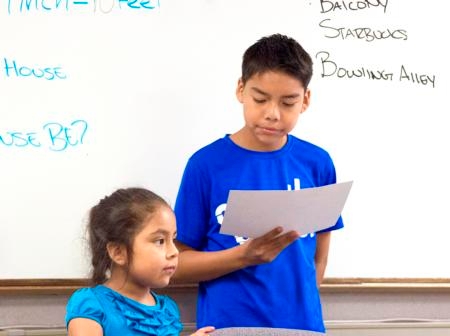
“We have been making changes to our programs to remove barriers and make 4-H more accessible. We are also testing new delivery models to expand 4-H's reach, particularly among Latino youth and families,” Horrillo said.
“This effort has been extremely successful and we are seeing the benefits in our membership,” said Horrillo. “The program's growth over the last year was significant, with a 16 percent increase in youth participation and a nearly 42 percent increase in Latino youth participation.”
“We asked Latino parents how we can help,” said Lupita Fabregas, assistant director for 4-H Diversity and Expansion. “Working parents suggested after school programs so they don't have to drive their kids to a different location.”
Through a pilot initiative in seven counties – Riverside, Orange, Kern, Santa Barbara, Monterey, Merced and Sonoma counties – UC ANR's 4-H Youth Development Program now offers in-school, after school and special interest clubs that explore subjects such as robotics. Children can join clubs that focus on projects for four to six weeks, rather than 4-H's year-long commitment. Bilingual and bicultural program representatives provide materials in English for the children and Spanish for parents. Although the activities are structured differently, they aim to teach Latino children science, leadership, civic engagement and other life skills taught through the traditional program.
The team of change agents applied the professional development strategy over three years, providing 176 hours of intercultural communication feedback sessions, learning communities and regional conferences to enhance the intercultural competence of 65 California 4-H personnel.

The UC ANR 4-H Youth Development Program has also assembled an advisory committee for 4-H multicultural and community engagement that includes Latino leaders Mary Lou de Leon Siantz, a professor at the Betty Irene Moore School of Nursing at UC Davis and director of the Center for Advancing Multicultural Perspectives on Science (CAMPOS); Steven Olmos, chief schools officer for Santa Clara County Office of Education; Albert Maldonado Jr., youth program manager for The California Endowment; and Juan P. Garcia, deputy director of the California Hispanic Chambers of Commerce.
UC ANR's action plan and resulting positive change provides a model for 4-H in other states to improve professional development and expand the program's reach. A summary of California's IDI professional development activities can be found in the National 4-H Latino Youth Outreach: Best Practices Toolkit, Professional Development.
